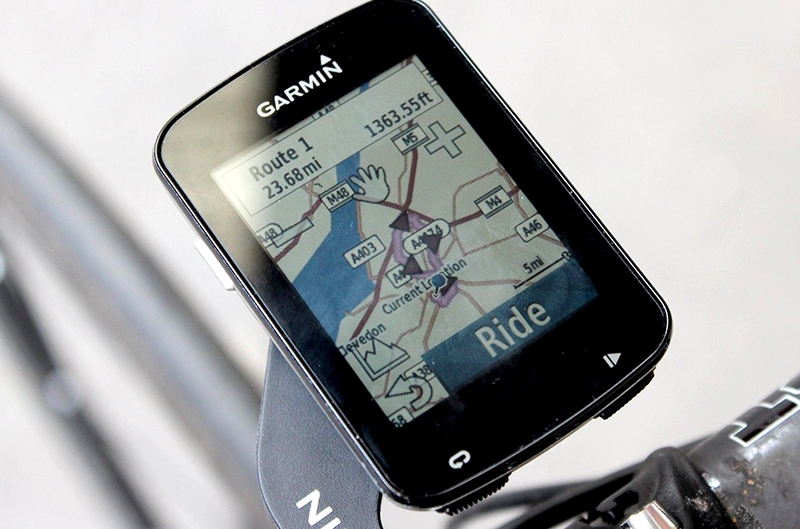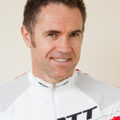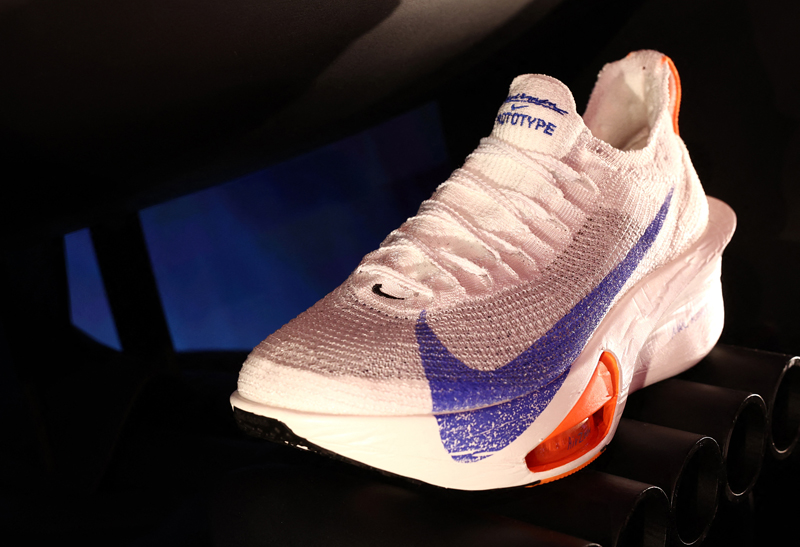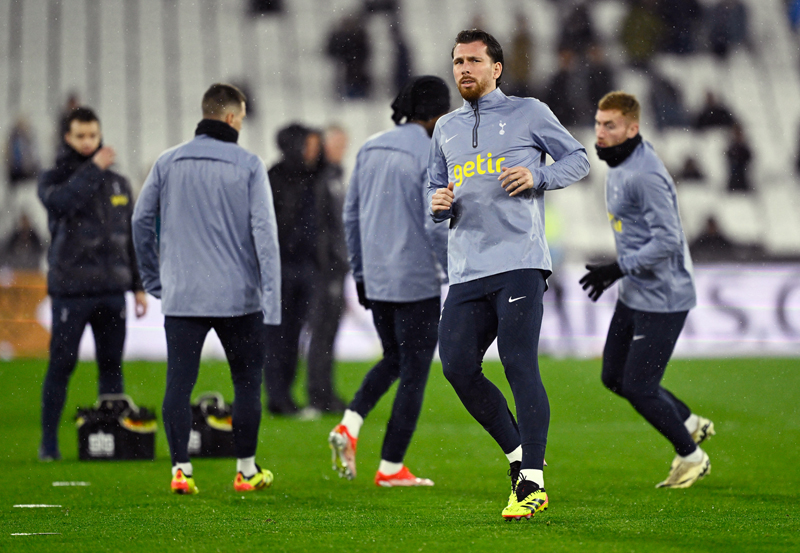Using global positioning systems (GPS) technology to enhance cycling performance may sound futuristic. But as Joe Beer explains, the use of GPS information technology to investigate, monitor and refine cycling training and racing is becoming commonplace and importantly, can make your training far more productiveWe live in an age where mobile phones have morphed into smart phones with amazing processing ability. And this technology is finding its way onto bike computers, many of which can now measure the rider’s heart rate, power, altitude and even position on the Earth’s surface.
The so-called global positioning system (GPS) uses a batch of satellites to pin point a sensor within a device to within a few metres. Cyclists are now able to find out not only know where they are but also exactly how far they’ve been or need to go. The Garmin Slipstream team has been using this system for several seasons in pro racing to very good effect. If this truly is the ‘information age’ then cycling really has grabbed the bull by the horns to harness it for maximum effect.
There are several reasons why the marriage between cycling and information systems has been so successful, outgrowing other sports. First, there is a tactical advantage for professional teams of being able to know a rider’s physiological effort, power output and position in a race. Second, the rise in popularity of satnav systems among professionals has produced a trickle-down effect to amateur cyclists, keen to kit their bikes out like their car. As the sport of cycling embraces many other expensive technologies to reduce drag, weight and enhance rider efficiency, there’s little psychological barrier to fitting bikes with expensive GPS systems!
Smart phones and sport applications
Medicine is the most important source of the technologies now embracing sport. As healthcare costs spiral, remote body sensors and positioning systems provide a method of reducing manpower and empowering the medical experts with critical real time data, despite the fact the subject may be hundreds of miles away! Even the Apple iPhone has applications for healthcare professionals (mostly in the US at the moment) which link positioning systems (GPS, GPRS) with feedback to doctors on patient health. The now commonplace heart rate monitor (HRM) had its origins in medical applications, so what else is out there?Polar has been working with Nokia to supply its 5140 phone with cyclists’ data. Users can upload data from the heart rate monitor (up to 50 sessions in total), store them, see the data on the mobile phone screen and send summary data as an SMS message.
Australian rowers are already using personal digital assistants (PDAs) that pick up boat velocity, oar angle and forces being applied by the rowers and then beam it to a shore-based laptop for real time data analysis(1). In the same vein, technologies from Hong Kong and Japanese universities have been pioneered to measure the movements of athletes and send the data wirelessly over short distances directly to coaches.
For several years, it’s been possible to see data in real time from Tour de France riders. Power, heart rate and speed data were beamed from selected riders onto the worldwide web for fans to watch.
Early in the new millennium, prototypes of bluetooth to GPRS (a beefed-up version of normal mobile communications methods) offered promising transmission of position, altitude and heart rate for cross-country skiers
British Cycling and other teams have proprietary systems that capture data on both rider and bike functioning, which is stored onboard and may also be sent in real time to trackside coaches for review.
It seems that cycling is truly embracing information technology wherever possible. Power-monitoring systems (PowerTap, SRM, Quarq, Polar) used to be professional-only options; now serious amateurs are willing to invest up to $2,000 on power meters and, coupled with GPS, they are now riding like the pros!
Benefits
Whilst playing with gimmicks should never interfere with training time, heart rate, GPS, power and the analysis of these data must be seen as part of ‘training smart’. It’s no longer a case of just riding miles to produce results – you need to use this information to train smarter. This not only means use of information about performance during your training session but also post-session assessment to see what can be done to make things better the next time.How Technology Can Make You a Better Rider
Correct route choice – If you’re training base endurance with low to moderate effort, a super-hilly course will defeat the session very quickly. By setting up courses to deliver the right type of training, your GPS is in fact acting like a ‘Director Sportif’, who sets the route for the day to match the day’s training goal. This should not be a coincidence but a planned conscious decision, which GPS can take care of by helping you construct the right kind of route.Altitude data – GPS give you maps but more importantly, these systems also give you ascent during training. GPS combined with an altimeter means you get exact altitude data where every foot up or down is measured. Power to weight ratio is a vital measurement of fitness in cycling, which means that climbing (where you have to haul your weight against gravity) is much more tiring that flat riding. With GPS, it’s no longer a case of ‘it was a rolling one’ or ‘quite hilly yesterday’. Instead you can quote ‘1550m climbed’ or ‘went flat and never rose more then 50 feet’!
Route familiarisation – It’s all too common for riders to ride a route only to find on race day its actually different to what they had thought. Similarly, unmarked long distance time-trials, sportives or triathlons are often hard to navigate. As GPS use increases, course details are often provided on the race websites allowing you to ride and practice the exact routes.
Accuracy – GPS gives you better data to ensure that the distance you ride is accurate and not just a speculative guess that may be way out. This in turn allows you to calculate average speeds far more effectively and in races you can also check on actual race distance (who ever admits it’s short?) so that your steady training speed can be compared to full-throttle racing.
Developing sessions
GPS provides information, but it is the application of this knowledge that gives riders who embrace the technology the full benefits. Just to have a GPS on your bike is not empowering in itself. The three ways you can learn and develop are:- Route tailoring – If you have a weakness then training sessions must be employed to overcome that weakness and the courses you ride must give you the right stimulus. If your heart rate is way too high to qualify for ‘steady’ or ‘base training’, it’s time to think about your routes. The heart rate (or power) that you’re trying to attain during a session comes more easily when the route is right. By using GPS to make better route assessments, you can tailor your routes to help match your training goals.
- Route evolution – It’s likely that your route habits have come about as a result of other riders showing you routes and the routes you take when you drive to places. However, you can evolve your routes by experimentation – turning down roads often missed and exploring with GPS as your pathfinder. Finding new and more varied routes can often give ‘stuck in a rut’ riders a fresh lease of enthusiasm.
- Alternative outlook – Riders who train in a new location or are extending the training distance of the big rides up to a key event often struggle to find the best routes. A GPS can give you ideas of what is around the bend or better still, you can take someone else’s route and ride it with a different outlook. Yes, this is possible with a map, but it’s harder to stop and read one and how can you easily share or try others ideas?
Choosing a GPS system
- Know why you need it – Just seeing a map of your training session soon loses its novelty and makes you realise that GPS can be overkill technology. You need GPS if you follow race routes you don’t know or if you regularly follow someone else’s route-guides or travel a lot and thus train in different locations regularly. If you train on the same routes and are happy with heart rate, power or perceived exertion, leave GPS alone and stick to a free internet mapping service (see below).
- Be sure you’ll be a downloader – The merits of GPS and the data bundled with it (such as altitude, distance time etc) need to be used – not just collated. By uploading to one of the many online systems (eg Garmin Connect – connect.garmin.com) you can not only check the desired effort was applied and the route was correct, but also compare your session to past sessions or send it to your coach/training friends. If you won’t be using the data to refine what you do, then this is not for you.
- Don’t get out of your depth – It will soon be possible to share your GPS details by posting at Googlemaps or even taking a road session and repeating it indoors (eg using the new Saris Joule non GPS system), for example. However, be sure that this technology doesn’t cloud your riding goals. If you just want to play with gadgets as part of fun cycling, enjoy. If you want to ride faster, longer or both – be sure you use this technology to maintain time efficiency in your riding and analysis.
- Consider cheaper alternatives – A full-blown GPS system need not be required. Applications like MapMyRide for the iPhone allow tracking of rides with a free (or very low cost) download. It is also possible to calculate ride distance and terrain with online browser applications like GoogleMaps (maps.google.co.uk). These will only get more and more elaborate with no extra outlay, except the time to map your rides.
User thoughts on GPS mapping and riding
High-tech training isn’t just for professionals. Three everyday athletes who compete in endurance events from 1-10 hours give their experiences of different mapping and GPS systems:Steve Marsh, Enduro mountainbiker on Free mapsI use ‘openstreetmap’, which is a free map of the world that can be downloaded onto your Garmin (see openmtbmap.org for MTB maps). I find the maps pretty good and better than the standard Garmin offering. You can also actually edit the base map so I have added new paths and bridleways onto it. These are then marked on my map and anybody else’s map on future downloads.
Martin Hirst, sportive rider on Garmin Connect
I use ‘Garmin Connect’ as I like the way I can share it with my friends and compare numbers long after the race. It takes time but once you get on top of the system, it’s no more time than any other analysis tool really. I am planning to ride L’Etape this summer and a recce in June will be helpful, aided by GPS data on the route. The only downside of being a fairly early adopter of this technology is that not all the routes are online to download. However, I guess it will get better over time.
Alan Cardwell Ironman triathlete on MapMyRide
I use ‘Map my ride’ (free online), which is a very useful tool for planning longer rides that are unknown or new – especially long ones when upping the distance. It's very accurate when compared to the data on mileage from the Powertap hub. It’s generally easy to use but occasionally has the tendency to crash during the mapping process. However, it's great to be able to share info with people who might want to use the same route or join in with your planned ride. I don’t personally see the point in GPS as an aid for cycling when I can get power, heart rate, speed and distance from the Powertap. The only advantage I could see is in the altitude function, but living in Scotland every ride is hilly so it’s not really telling me something I don't already know!
Summary
GPS (and whatever future mapping options lie around the corner) is being aggressively embraced by professional and amateur athletes. Combine this with the expanding connectivity of the web/sharing of data and the savvy cyclist is clearly going to be empowered with correct use of such data. Examples include tailoring courses to give exact training distances, accurate determination of ascent/descent, race-route simulation and even sharing favourite routes with other riders living in far-flung corners of the globe.Joe Beer is a multisport coach (JBST.com) author of ‘Need to Know Triathlon’ (Harper Collins) and a successful multisport athlete in triathlons, sportives and time trials
Reference
1. Brit J Sports Med. 2007 41(5): 285-289.











